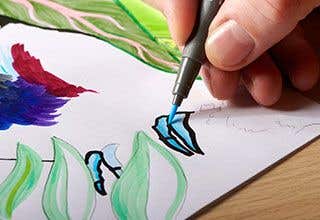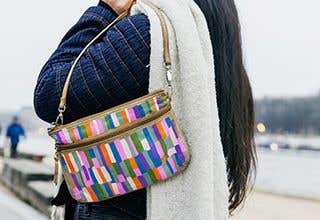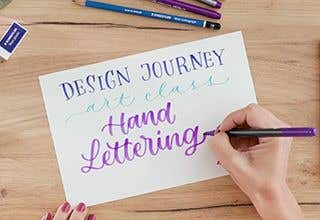Discover the Timeless Art of Handmade Impressions
Block printing is a beautiful blend of creativity and craftsmanship. It is a tactile, intuitive technique that allows for artistic expression through repetition, yet no two prints are ever truly identical. Whether you are creating fine art prints, personalised home décor or wearable designs, block printing invites you to slow down, carve thoughtfully and produce something uniquely your own.
At Eckersley’s, we see people of all skill levels fall in love with printmaking. It is a medium that welcomes beginners and offers endless exploration for those looking to dive deeper. Whether you are trying block printing for the first time or refreshing your toolkit, here is everything you need to know to get started.
What Is Block Printing?
Block printing is a traditional printmaking method where a design is carved into a surface, inked and pressed onto paper or fabric. This technique dates back thousands of years yet remains incredibly popular today for its visual impact and hands-on appeal.
Blocks can be made from materials like linoleum, wood or rubber. Once carved, the raised areas receive the ink and transfer the design onto your chosen surface. The charm of block printing lies in its handmade quality. Every impression carries slight variations, giving your artwork personality and texture that digital prints simply cannot match.
From bold single-colour prints to intricate layered compositions, block printing is as simple or complex as you choose to make it. It is a medium that rewards planning but also leaves room for happy accidents and experimentation.
Essential Block Printing Tools and Materials
Getting started with block printing does not require a huge investment, but having the right tools can make a significant difference in your results.
- Carving blocks: Linoleum blocks are soft and easy to carve, perfect for beginners and detailed work. Wood blocks offer more texture and a traditional printmaking feel.
- Carving tools: A good set of lino cutters or carving knives allows you to vary your linework, from fine details to broader cuts. Comfortable grips help reduce hand fatigue during longer sessions.
- Printing inks: Water-based printmaking inks are popular for their easy cleanup and vibrant colour range. Oil-based inks take longer to dry but offer a rich, durable finish.
- Brayers (rollers): A brayer is essential for applying an even coat of ink across your block. Choosing the right roller size for your project ensures smooth application without blotching.
- Pressing tools:*Simple hand tools like a baren allow you to transfer your print cleanly. If you are working at larger scales or producing multiple editions, a printing press can provide more consistent pressure.
- Printing surfaces: Paper with a slight texture or fabric prepared with the correct ink gives the best results. Always test surfaces beforehand to ensure proper ink adhesion.
For those starting out, many starter kits bring together the basics, making it easy to gather everything needed in one go.
Step-by-Step Guide to Block Printing
Block printing has a simple workflow that becomes more intuitive with practice. Here is a step-by-step guide to get you going:
-
Design your image: Sketch your design onto paper, then transfer it to your block using tracing paper or by drawing directly onto the surface. Remember that your final print will be a mirror image of the block.
-
Carve your block: Use your carving tools to carefully remove the negative spaces, leaving the raised areas that will hold the ink. Always carve away from your hands and work slowly to build confidence and precision.
-
Prepare and apply ink: Roll a small amount of ink onto a flat surface until it spreads evenly across your brayer. Apply the ink to the raised parts of your block with smooth, even strokes.
-
Transfer your print: Lay your paper or fabric carefully over the inked block. Apply pressure evenly with a baren, your hands or a press, making sure to press all parts of the block.
-
Lift and reveal: Peel the surface away slowly to reveal your print. Allow the print to dry flat before handling further or layering additional designs.
Take your time between prints to reapply ink and clean up edges if needed. With experience, you will develop a rhythm that makes the entire process even more enjoyable.
Creative Block Printing Ideas and Applications
Once you get comfortable with the basics, block printing opens the door to an incredible range of projects and artistic expressions:
- Textile printing: Design and print your own fabrics for clothing, homewares or accessories.
- Greeting cards and gift wrap: Create personalised stationery for birthdays, holidays or special events.
- Wall art and posters: Scale up your designs and create bold art prints ready for framing.
- Pattern making: Carve repeating patterns that can be tiled across surfaces to create intricate backgrounds or textiles.
- Mixed media exploration: Combine block printing with watercolour, ink washes or collage elements for layered, textural effects.
More experimental approaches like gel printing allow you to play with texture, layering and monoprint techniques alongside traditional block prints. Using printmaking papers or felt blankets and presses can further refine your results and give you clean, professional-quality impressions on delicate surfaces.
Browse Our Premium Printmaking Supplies at Eckersley’s
Whether you are carving your first block or upgrading your printmaking setup, Eckersley’s has everything you need to bring your designs to life. Our range includes quality carving tools, printing inks, papers and accessories suited for all levels of experience.
Visit your local Eckersley’s store to see our tools and materials first-hand, or browse online to find exactly what you need for your next project. Our team is always happy to offer advice and inspiration to help you make the most of your creative journey.




